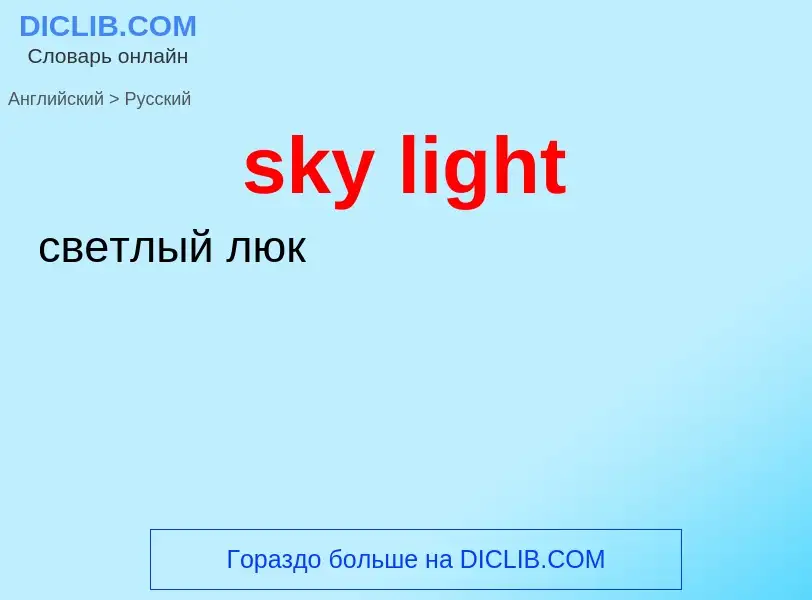Übersetzung und Analyse von Wörtern durch künstliche Intelligenz ChatGPT
Auf dieser Seite erhalten Sie eine detaillierte Analyse eines Wortes oder einer Phrase mithilfe der besten heute verfügbaren Technologie der künstlichen Intelligenz:
- wie das Wort verwendet wird
- Häufigkeit der Nutzung
- es wird häufiger in mündlicher oder schriftlicher Rede verwendet
- Wortübersetzungsoptionen
- Anwendungsbeispiele (mehrere Phrasen mit Übersetzung)
- Etymologie
sky light - Übersetzung nach russisch
Definition
Wikipedia

Daylighting is the practice of placing windows, skylights, other openings, and reflective surfaces so that sunlight (direct or indirect) can provide effective internal lighting. Particular attention is given to daylighting while designing a building when the aim is to maximize visual comfort or to reduce energy use. Energy savings can be achieved from the reduced use of artificial (electric) lighting or from passive solar heating. Artificial lighting energy use can be reduced by simply installing fewer electric lights where daylight is present or by automatically dimming/switching off electric lights in response to the presence of daylight – a process known as daylight harvesting.
The amount of daylight received in an internal space can be analyzed by measuring illuminance on a grid or undertaking a daylight factor calculation. Computer programs such as Radiance allow an architect or engineer to quickly calculate benefits of a particular design. The human eye's response to light is non-linear, so a more even distribution of the same amount of light makes a room appear brighter.
The source of all daylight is the Sun. The proportion of direct to diffuse light impacts the amount and quality of daylight. "Direct sunlight" reaches a site without being scattered within Earth's atmosphere. Sunlight that is scattered in the atmosphere is "diffused daylight". Sunlight reflected off walls and the ground also contributes to daylighting. Each climate has different composition of these daylights and different cloud coverage, so daylighting strategies vary with site locations and climates. At latitudes north of the Tropic of Cancer and south of the Tropic of Capricorn, there is no direct sunlight on the polar-side wall of a building between the autumnal equinox and the vernal equinox (that is, from the September equinox to the March equinox in the Northern Hemisphere, and from the March equinox to the September equinox in the Southern Hemisphere.) In the Northern Hemisphere, the north-facing wall is the "polar-side" and in the Southern Hemisphere, it is the south-facing wall.
Traditionally, houses were designed with minimal windows on the polar side, but more and larger windows on the equatorial side (south-facing wall in the Northern Hemisphere and north-facing wall in the Southern Hemisphere). Equatorial-side windows receive at least some direct sunlight on any sunny day of the year (except in the tropics in summer), so they are effective at daylighting areas of the house adjacent to the windows. At higher latitudes during midwinter, light incidence is highly directional and casts long shadows. This may be partially ameliorated through light diffusion, light pipes or tubes, and through somewhat reflective internal surfaces. At fairly low latitudes in summertime, windows that face east and west and sometimes those that face toward the nearer pole receive more sunlight than windows facing toward the equator.



![Modern [[skylight]] Modern [[skylight]]](https://commons.wikimedia.org/wiki/Special:FilePath/Skylight w cuppola.jpg?width=200)
![laylights]] at the Lyme Art Association Gallery laylights]] at the Lyme Art Association Gallery](https://commons.wikimedia.org/wiki/Special:FilePath/Skylights at Lyme Art Association.jpg?width=200)
